French Doors vs Bifold Doors: Which Should I Choose?
Table of Contents
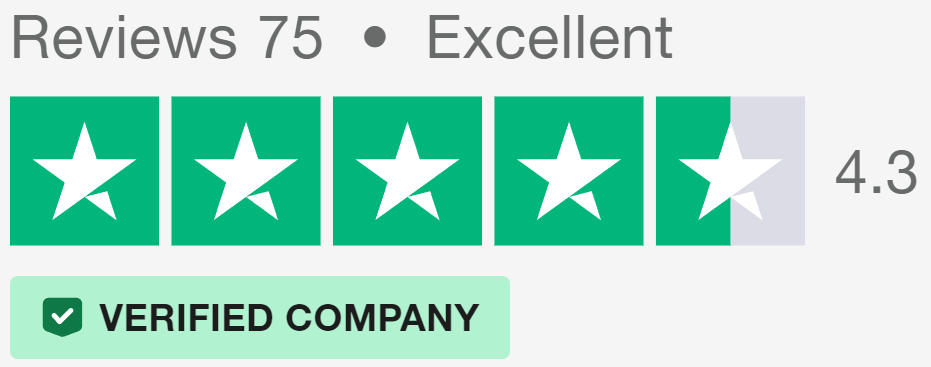
What Are French Doors and Bifold Doors?
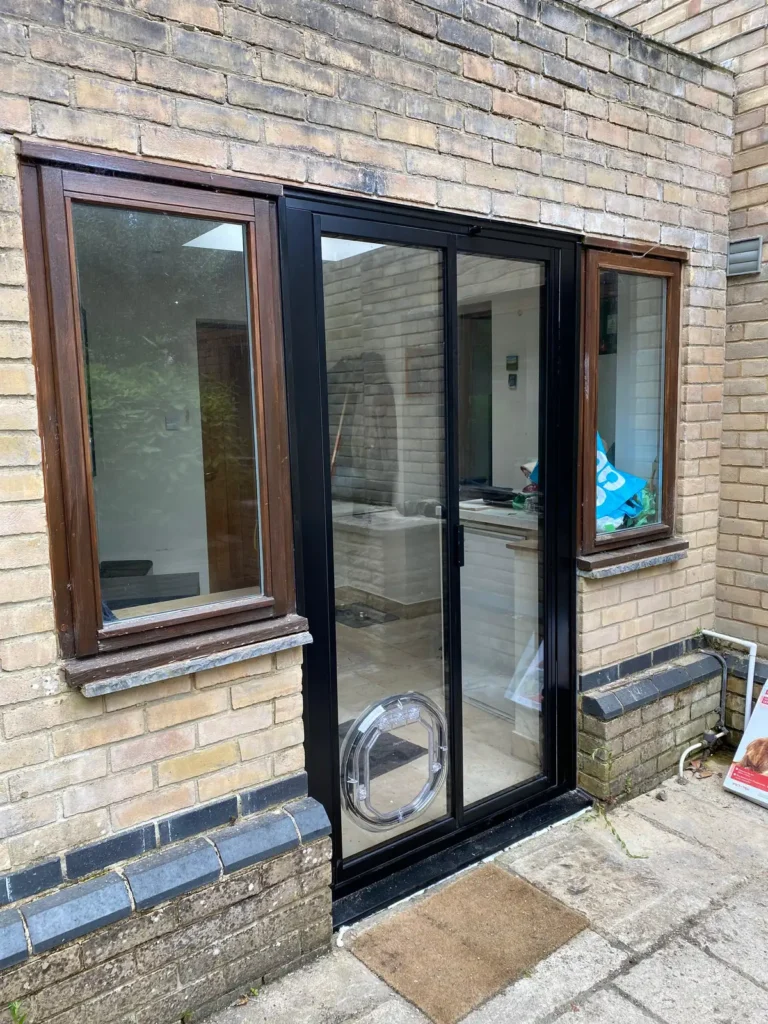
French Doors Explained
French doors have graced homes for centuries, lending an air of elegance to both traditional and contemporary spaces. These doors typically consist of two panels, each hung on hinges at opposite sides of an opening. When closed, they meet in the middle, creating a symmetrical appearance that’s both functional and visually appealing.
Glass panes are a hallmark of French doors, allowing light to flood into a room even when the doors are shut. The number and size of these panes can vary, from small, divided lights to large, single sheets of glass, making French doors adaptable to various architectural styles.
French patio doors are able to open fully, creating a wide passageway, making them particularly useful for connecting indoor and outdoor areas, such as patios or gardens. They can also serve as internal doors, separating rooms while maintaining an open feel.
What Are Bifold Doors?
Bifold doors (also known as folding doors or concertina doors) offer a modern solution for those seeking to maximise space and light in their homes. Unlike French doors, bifolds consist of multiple panels connected by hinges that slide along a track. This unique mechanism allows them to open up entire walls too. This folding action is what gives bifolds their name and distinctive character. When fully open, the doors stack neatly to one or both sides of the frame, taking up minimal space and providing an unobstructed view.
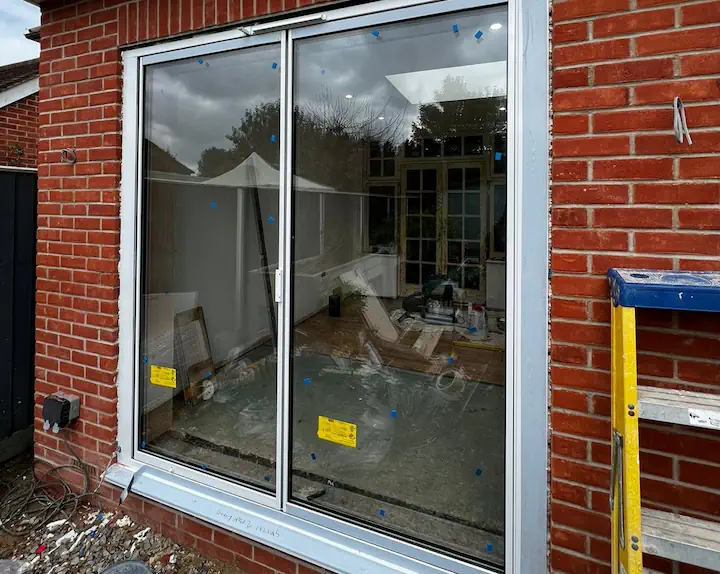
Glass is also a key component of bifold doors, but the panels are typically larger than those found in French doors. This results in expansive views and plenty of natural light. The frames of bifold doors can be made from various materials, including uPVC, aluminium, and timber, each offering different benefits in terms of durability, insulation, and aesthetics.
How Bifolds Work
The operation of bifold doors relies on a top-hung or bottom-rolling system. In a top-hung configuration, the weight of the doors is supported by the upper track, which often results in smoother operation. Bottom-rolling systems, on the other hand, place the weight on the lower track, which can be beneficial in certain structural situations.
Bifold doors can be configured to open inwards or outwards, and can be designed to stack to one side or split in the middle. This flexibility allows homeowners to choose a setup that best suits their space and needs.
French Doors vs Bifold Doors: Design and Mechanism
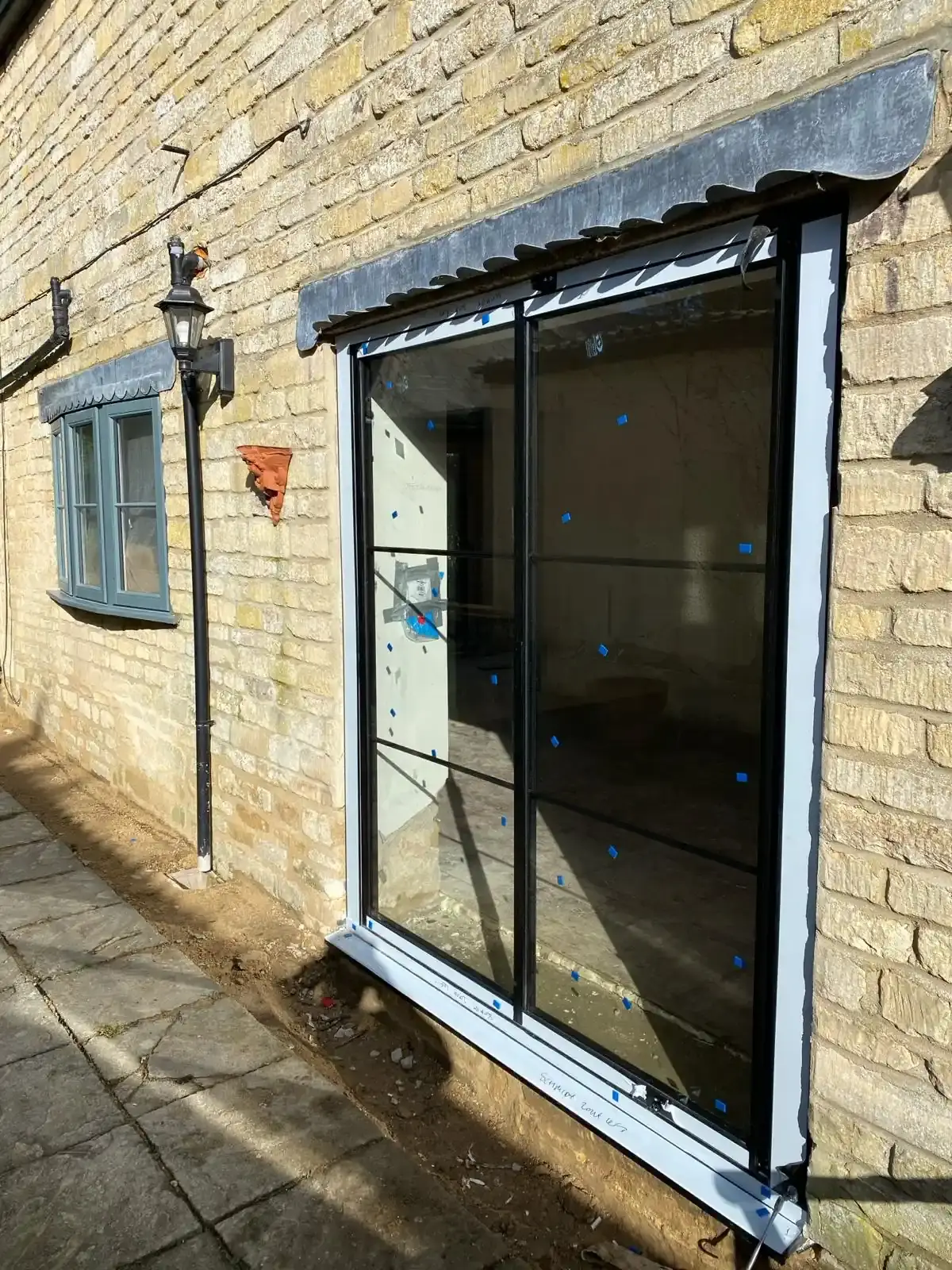
French Door Style
French doors bring a touch of timeless charm to homes, whether they’re gracing a cosy cottage or a sleek modern build. Their design often features symmetrical panels, each adorned with glass panes that let light flood in. This classic look works particularly well in traditional homes, where the doors can complement existing architectural features.
The mechanism of French doors is straightforward: they swing open on hinges, much like regular doors. This simplicity is part of their appeal, as it allows for easy operation and maintenance. When open, French doors create a clear, unobstructed path between spaces, making them ideal as exterior doors leading to a garden or patio.
Bifold Door Aesthetics
Bifold doors offer a different aesthetic approach, focusing on creating expansive openings with large panes of glass, providing panoramic views even when the doors are closed. This makes bifold patio doors particularly popular in homes where the view is a prime asset. This dramatic effect is especially impressive with large bifold doors, or corner bifold doors, which can open up two sides of a room simultaneously.
Design Flexibility
Both door types offer flexibility in design, but in different ways. French doors can be customised with various glass patterns, frame materials, and hardware options to suit different architectural styles. They work well in both modern and period properties, adapting to the home’s character.
Bi-fold doors shine in their ability to create flexible living spaces. Their design allows for multiple configuration options, including different numbers of panels and various opening arrangements. This adaptability makes them suitable for a range of applications, from small apartments to large open-plan living areas.
The choice between bifold doors vs French doors often comes down to the desired look and feel of the space. While French doors offer a classic, defined entryway, bifolds provide a more open, fluid connection between areas. Both can feature a level threshold, ensuring smooth access between indoor and outdoor spaces.
French Doors vs Bifold Doors: Ease of Use, Maintenance and Efficiency
Using French Doors
French doors offer a straightforward operation that many homeowners appreciate. Their swinging mechanism is intuitive, allowing for quick and easy access to outdoor spaces. This simplicity makes them a popular choice for those who value ease of use in their daily routines.
Unlike sliding options, they need clearance both inside and outside to swing open without obstruction. This can influence furniture placement and patio design, as you’ll need to account for the doors’ arc when planning your space.
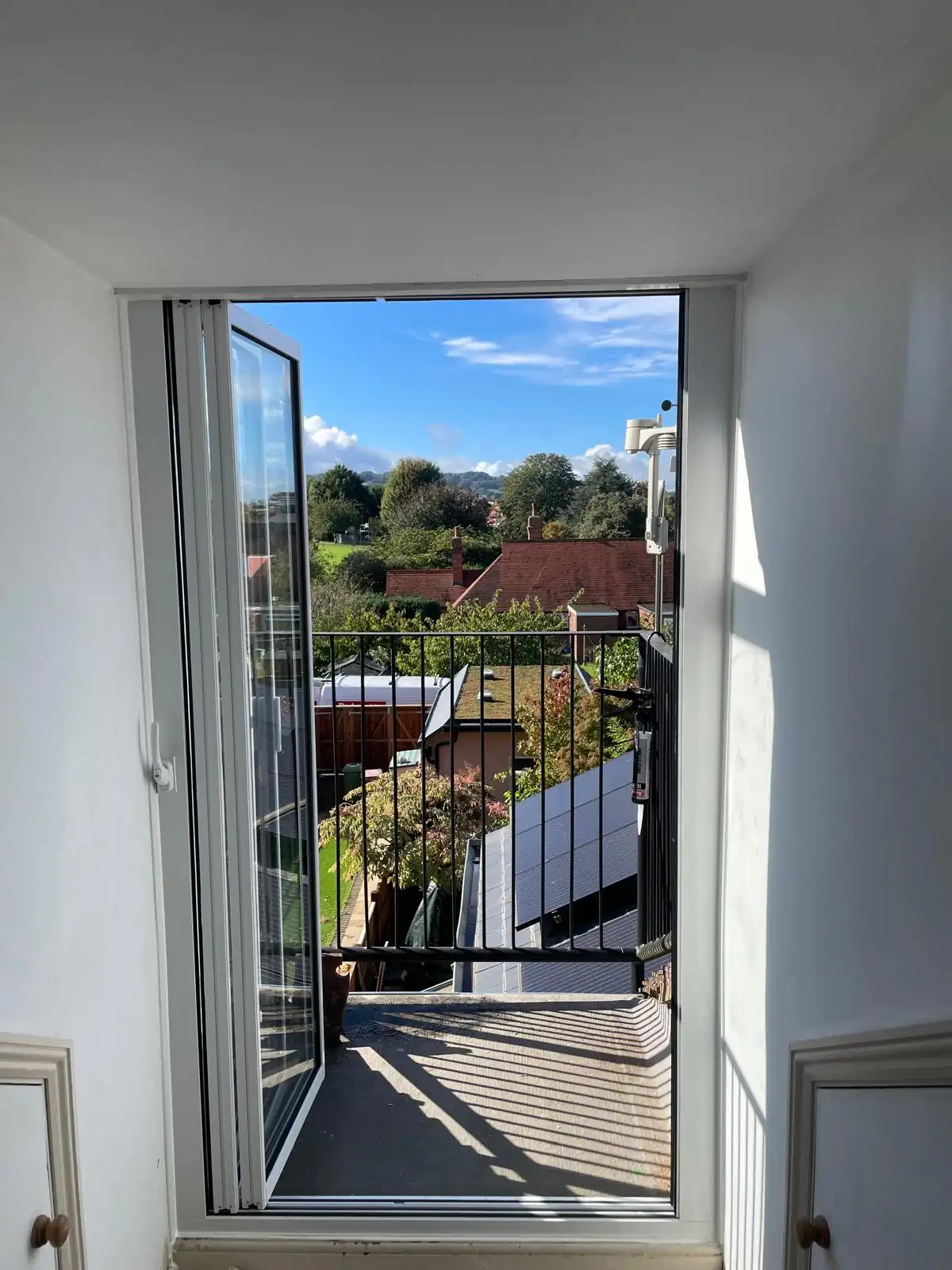
Operating Bifold Doors
Bi-folding doors present a different user experience. Their sliding and folding action allows for a variety of opening configurations, from partially open to fully retracted. This flexibility can be particularly useful when entertaining or enjoying good weather, as you can adjust the opening to suit your needs. However, the mechanism can be seen as more complex and less intuitive.
Modern bifold doors often feature smooth-gliding mechanisms that make operation effortless. However, it’s worth noting that all panels typically move together, which means you’ll be opening a larger area even for quick access. Some designs include a traffic door for everyday use, combining the benefits of both door types.
Maintenance Requirements
When it comes to upkeep, French doors generally have an edge. With fewer moving parts and a simpler mechanism, they typically require less maintenance over time. Regular cleaning and occasional hinge lubrication are usually sufficient to keep them in good working order.
Bi-fold doors, while not high-maintenance, do need a bit more attention. The track system that allows for their smooth operation should be kept clean and free of debris. Rollers and hinges may need periodic adjustment to ensure the doors continue to open and close smoothly. However, many homeowners find that the benefits of bifold doors outweigh these minor maintenance tasks.
Energy Efficiency Comparison
Either bifold or French doors can offer good thermal performance, but there are some differences. French doors, with their more traditional design, often provide excellent insulation when closed. Their solid frame and smaller glass panels can contribute to better heat retention.
Aluminium bifold doors have made big strides in energy efficiency in recent years. Many modern designs incorporate thermal breaks and high-performance weatherstripping to improve their insulating properties. When combined with double glazing, these doors can offer impressive thermal efficiency, helping to keep your home warm in winter and cool in summer.
Security Features
Security is a top priority for any exterior door. French doors have long been popular choices for their robust build and the ability to incorporate multi-point locking systems. These systems secure the door at multiple points along the frame, providing a high level of security.
Bi-fold doors also offer strong security features. Many designs include multi-point locks on the main traffic door, with additional locking points where the panels meet. The track system of bifold doors can also add an extra layer of security, making forced entry more difficult.
French Doors vs Bifold Doors: Suitability for Different Spaces
French Doors in Small Openings
French doors excel in smaller spaces, making them ideal for standard doorways and modest-sized apertures. Narrow French doors can fit into openings as small as 1 metre or less wide, providing an elegant solution for compact areas. Their swing action doesn’t require the same width as bifold systems, allowing them to be installed in tighter spots without compromising on style or function.
In bedrooms or home offices, French doors can create a sense of spaciousness without sacrificing privacy. They allow natural light to flow between rooms when open, yet offer a clear separation when closed. This balance makes them particularly suitable for homes where space is at a premium but light and airflow are desired.
Bifold Doors for Wide Spaces
When it comes to french doors vs bifold doors for larger openings, bifolds often take the lead. Modern bifolding doors can span impressive widths, with some systems capable of covering openings up to 7 metres wide. This makes them particularly well-suited to open-plan living areas or extensions where the goal is to create a broad connection with the outdoors. In larger homes, bifold external doors can be used to divide large internal spaces, offering flexibility in how rooms are used and defined.
Architectural Impact
French doors, with their classic design, often complement traditional architectural styles. They can add a touch of elegance to period properties or provide a counterpoint to more contemporary designs, bridging the gap between old and new.
Bi-fold doors, on the other hand, tend to align with more modern architectural approaches. Their clean lines and large glass panels suit minimalist designs and contemporary aesthetics. However, with careful selection of materials and finishes, bi-fold doors can also be integrated into more traditional settings, offering a blend of classic charm and modern convenience.
French Doors vs Bifold Doors in Different Rooms
Different rooms in a home may benefit from different door types. In kitchens, french doors can provide easy access to outdoor dining areas without taking up valuable wall space when open. They also allow for ventilation without fully exposing the kitchen to the elements.
Bifolding internal doors offer unique advantages in living areas or dining rooms. They can be used to create flexible spaces that can be opened up for entertaining or closed off for cosier, more intimate settings. This adaptability makes them particularly useful in homes where space needs to serve multiple purposes.
Thermal Efficiency in Various Settings
The thermal efficiency of these doors can vary depending on the specific installation and surrounding architecture. In well-insulated, modern homes, both door types can perform admirably when fitted with high-quality glazing. However, in older properties with less consistent insulation, the solid panels of French doors might offer better thermal performance in certain areas.
Bi-fold doors, despite their larger glass areas, can achieve excellent thermal efficiency when fitted with modern, energy-efficient glass. Their ability to create a tight seal when closed helps maintain consistent indoor temperatures. In sunrooms or conservatories, bi-fold doors can be particularly effective, allowing for temperature regulation through adjustable openings.
Alternatives to French Doors or Bifold Doors
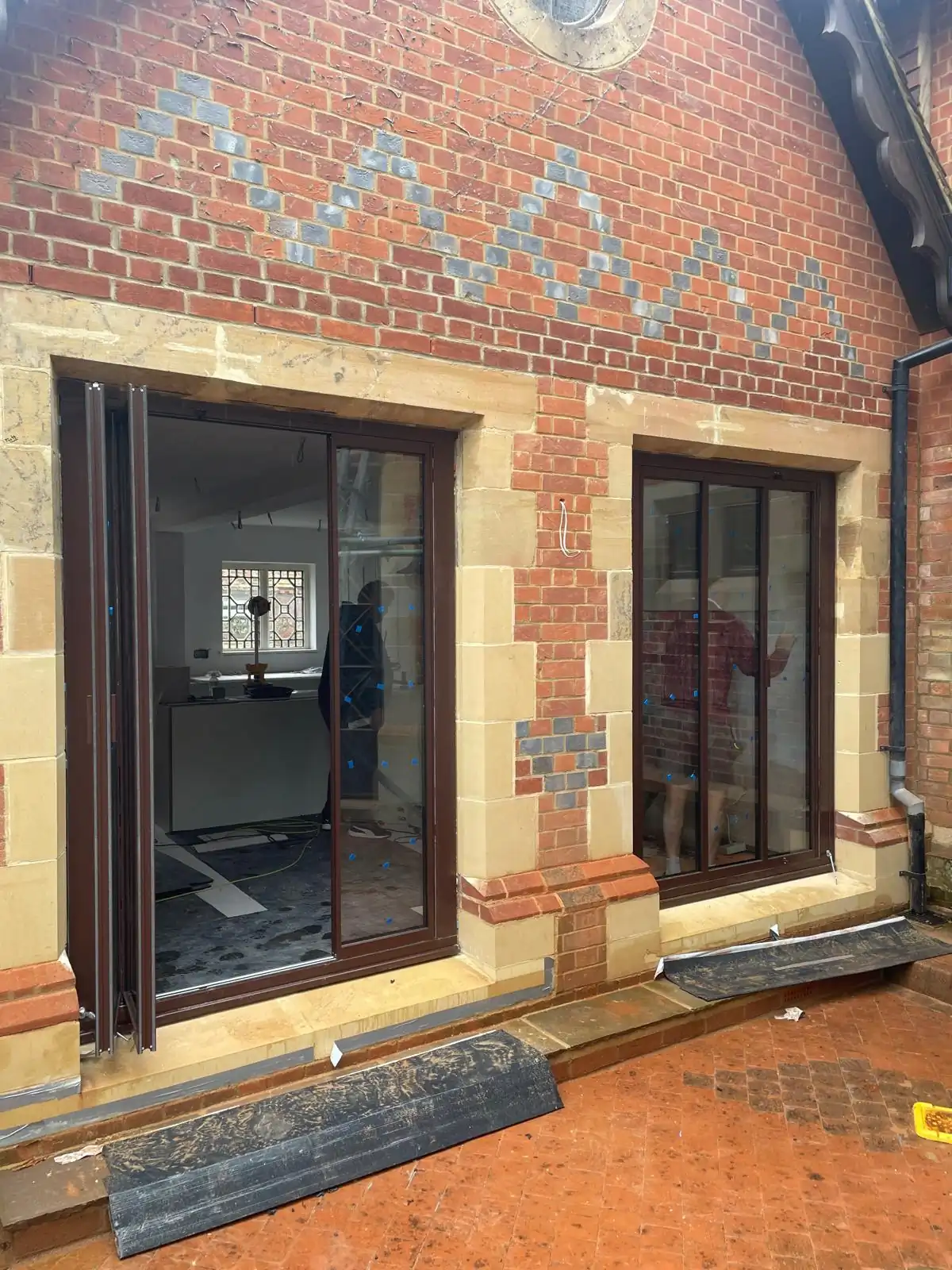
Slide and Turn Doors
Slide and turn doors offer a unique combination of features not seen in other types of doors such as bifold or French doors. These doors slide along a track and then pivot to open, providing flexibility without the complexity of bi-folding mechanisms. This design allows for a wide opening similar to bifolds, while maintaining the option to open just a single panel for quick access, akin to French doors.
Slide and turn doors can be particularly useful in spaces where the swing of French doors might be impractical, but the full width of bifolds isn’t necessary. They work well in moderate-sized openings, typically ranging from 1.8 to 4 metres wide. The ability to slide panels individually offers greater control over ventilation and access compared to traditional sliding doors.
Sliding Door Options
Sliding doors present another alternative in the french doors vs bifold doors debate. These doors feature large glass panels that glide sideways, offering unobstructed views with simple operation. They excel in situations where space is at a premium, as they don’t require clearance for swinging or folding.
Modern sliding door systems can span impressive widths, rivalling bi-fold doors in their ability to create large openings. Some designs feature multiple tracks, allowing for more flexible configurations. This can include centred openings or the ability to stack all panels to one side, mimicking the full opening capability of bifolds.
Selecting an Alternative
The available space, desired opening width, and frequency of use all influence the decision. Slide and turn doors might suit those who want the best of both worlds – the ability to open fully like bifolds, with the option of single-panel access like French doors.
Sliding doors could be the right choice for those prioritising uninterrupted views and ease of use. They’re particularly effective in areas with limited outdoor space, where swinging or folding mechanisms might be impractical. However, they may not provide the same level of openness as fully retracted bi-folding doors.
French Doors vs Bifold Doors: FAQ
Are bifold doors more expensive than French doors?
Generally, bifold doors are more expensive than French doors due to their complex mechanism and larger glass panels. The cost difference can vary depending on factors such as materials, size, and quality. However, the price gap has narrowed in recent years as bifold doors have become more popular and manufacturing processes have improved.
Do bifold or French doors let in more light?
Bifold doors typically allow more light into a space than French doors. This is because bifold doors usually feature larger glass panels and can open up a wider area when fully retracted. French doors, while still providing good natural light, are limited by their frame size and the fact that they don’t open as wide. The amount of light also depends on the specific design and glass type chosen for each door style.
How do bifold doors compare to French doors in connecting kitchen and garden?
Bifold kitchen doors excel at creating a smooth connection between the kitchen and garden, offering a wide opening that can span the entire wall. This expansive access allows for easy movement between indoor and outdoor spaces, perfect for entertaining or enjoying al fresco dining. French doors, while still providing a lovely connection, offer a more defined threshold between the two areas. They’re ideal for those who prefer a clear distinction between indoor and outdoor spaces or have limited wall space for door installation.
Are bifold doors too modern for traditional homes?
Bifold doors are often associated with modern design, but they can be successfully integrated into traditional homes with careful planning. The key lies in choosing the right materials, colours, and finishes that complement the existing architecture. Many manufacturers now offer bifold doors with traditional styling options, such as wood grain finishes or period-appropriate hardware.
It’s also worth noting that the concept of folding doors isn’t new – variations have been used in traditional Japanese architecture for centuries. When thoughtfully implemented, bifold doors can add a touch of contemporary functionality to a traditional home without compromising its character.
Are French doors or bifold doors better for preserving the authenticity of older houses?
French doors are generally seen as better for preserving the authenticity of older houses. Their classic design and proportions often align more closely with traditional architectural styles. French doors have been used in residential architecture for centuries, making them a natural fit for period properties.
However, this doesn’t mean bifold doors are entirely unsuitable. With careful selection and installation, bifold doors can be incorporated into older homes in a way that respects and grows their character.
We’d Love to Help You
Vision Glass Doors is a designer, manufacturer, and installer of premium door systems. We are a family run business with over 20 years’ experience and 5,000 installations across the UK.
Our leading range of door systems include Ultra Slim – Slide and Turn Doors, Slimline Sliding Patio Doors and Frameless Glass Doors. Suitable for various internal and external applications, they are applicable to residential and commercial projects.
Click Quick Quote Online for a free quotation within 24 hours. Alternatively, call or email us on 01582 492730 or at info@visionglassdoors.co.uk.

